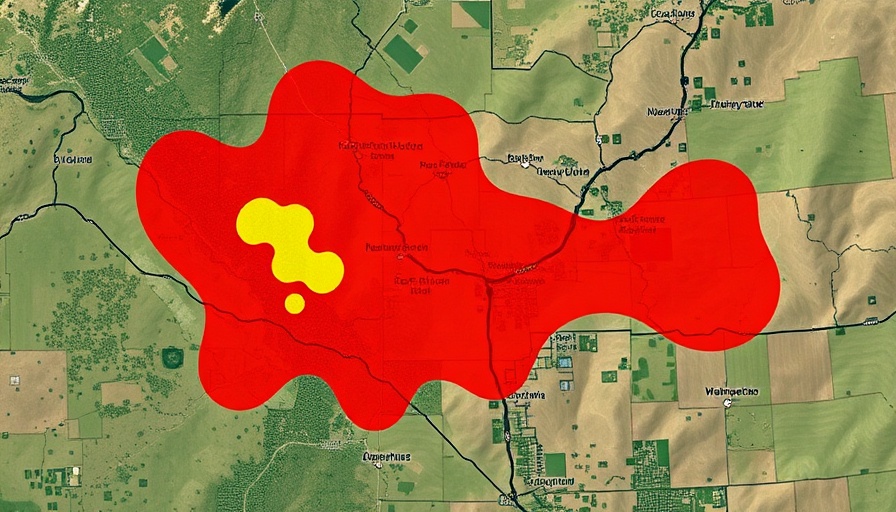
The Incident: A Quick Overview
On a seemingly ordinary day in Brenham, Texas, residents experienced a sudden shelter-in-place order due to an unexpected hazardous materials incident. Workers drilling a water well near Oil Field Road struck pockets of hydrogen sulfide (H2S), leading to critical emergency responses. Fortunately, local authorities acted promptly, lifting the order shortly after confirming that the wellhead was plugged and the gas levels were under control.
Understanding Hydrogen Sulfide: The Hidden Danger
Hydrogen sulfide is a colorless gas known for its distinct rotten egg odor. At lower concentrations, it can cause irritation to the eyes, nose, and throat, while higher levels can be life-threatening, potentially causing loss of consciousness or explosive hazards. The Brenham incident highlights the importance of public awareness regarding toxic gases often present in oil and gas extraction activities.
The Role of Local Emergency Services: Rapid Response in Action
The City of Brenham Fire Department, along with the Washington County Office of Emergency Management, quickly mobilized to address the crisis. Their coordinated efforts, aided by hazardous materials crews from College Station, underscore the significance of preparedness in emergencies. This incident serves as a reminder of the critical role emergency services play in safeguarding community health and safety.
Community Impact: Understanding Shelter-in-Place Protocols
For residents of Brenham, the shelter-in-place order meant taking immediate action to protect themselves and their families. Adhering to protocols includes staying indoors, sealing windows and doors, and waiting for further instructions from local authorities. While the order was short-lived, it emphasizes the importance of community vigilance and preparedness to respond effectively to environmental hazards.
Preventing Future Incidents: Enhancements and Safety Measures
The recent incident could prompt local authorities to review and reinforce safety measures related to drilling activities. Enhanced monitoring of gas levels during drilling operations and regular safety drills can help reduce the risks associated with such emergencies in the future. Furthermore, community education about the signs of hazardous gas exposure can empower residents to act swiftly if necessary.
Connections to Broader Issues: A Growing Concern
This incident in Brenham fits within a larger narrative concerning the safety of oil and gas industries across the United States. With increasing scrutiny on environmental safety, questions arise about the measures in place to protect local communities from potential hazards. As drilling and extraction practices evolve, ensuring robust safety standards will be paramount to reducing incidents like this one.
What Can Residents Do?
Local residents can take proactive steps to better prepare themselves for emergencies. Staying informed about local drilling activities, participating in community meetings, and understanding shelter-in-place protocols can significantly enhance community safety. Furthermore, reporting any unusual odors to local authorities can help track and mitigate hazardous situations before they escalate.
As Brenham navigates this incident and its implications, community engagement, and preparedness will be key in fostering a safer environment. Stay tuned to local news for updates on future safety measures and community initiatives aimed at improving air quality and safety standards in the region.
 Add Element
Add Element  Add Row
Add Row 



Write A Comment